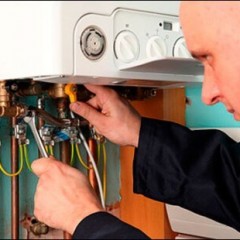TN-S Grounding System Overview
Principle of power transmission
The main feature of the system is that electricity is delivered to consumers:
- in three-phase networks with 5 conductors;
- in single-phase networks with 3 conductors.
In order to make a detailed description of this principle of electric power transmission, it is necessary to refer to the connection diagram.
TN-S system connection diagram:
Explanation of the scheme: A, B, C - phases of the electric network, PN - working neutral conductor, PE - protective neutral conductor
A distinctive feature of power supply lines with grounding according to the TN-S principle is that five conductors come from the power source, three of them perform the functions of power phases, as well as two neutral ones connected to the zero point:
- PN is a purely zero conductor, involved in the operation of the electrical circuit.
- PE - solidly earthed, performs protective functions.
Overhead power lines must be equipped with five wires, the power cable is equipped with the same number of cores. These technical requirements cause a significant increase in the cost of the system.
According to the connection diagram, three phases and a neutral wire are connected to the working terminals of a three-phase load. The fifth conductor acts as a jumper between the body of the appliance and the ground. Single-phase consumers are bound without fail by three conductors, one of which is phase, the second is zero, the third is grounding. Household appliances are provided with such a connection due to sockets with three sockets and three-plug electrical plugs and grounding knives. In colloquial everyday life, these products are endowed with the prefix "euro".
Indisputable Benefits of TN-S
The increased material costs and financial costs of installing and maintaining such power lines are fully justified by the indisputable advantages inherent in this grounding system.
Firstly, it provides an increased degree of electrical fire safety. This option allows you to use in the optimal mode protective shutdown devices (RCD) Option TN-C allows the use of RCDs as a means of protection against leakage currentsHowever, it will only work when touched by an electric device with a reduced insulation resistance, which is associated with a short-term flow of electric current through the human body. An RCD connected to an electrical network with a TN-S ground circuit disconnects the power supply to the faulty consumer immediately when leakage currents occur.
Secondly, there are no problems in creating and monitoring the technical condition of the grounding circuit of the object. You should know that the ground loop requires constant monitoring. Under the influence of time and natural factors, the device may fail, which will entail disruption of the operation of electrical systems, and most importantly, will serve as a threat to human life and health.
Thirdly, there is no need to use jumpers connecting the metal housings of electrical appliances to the ground loop, which can create a number of inconveniences and violate the aesthetic appeal of the interior of the room.
Fourthly, it eliminates high-frequency interference inducing detrimental effects on the operation of electronics. Power supply of objects saturated with sensitive electronic equipment should be equipped with separate neutral conductors PE and PN.
How to make a contour in your home
Having considered all the pros and cons of this system, a rare homeowner will not agree to re-equip the electrical network of his home and bring it in accordance with TN-S. Most likely, it will take a long time to wait for the federal program for the universal re-equipment of electric networks. To speed up the process, there is grounding system TN-C-S, combining the elements of TN-S and TN-C and meeting all the requirements of the Electrical Installation Rules (PUE) Going to it is quite possible both for the conditions of the cottage and for giving. To do this, it is necessary to make a switch in the input switchgear (ASU), which will ensure the separation of the PEN conductor entering the house into zero working PN and protective PE. Arrange a ground loop and connect PE to it. As a result of this conversion, the home electrical network will be brought into line with TN-S.
The grounding circuit of TN-C-S is as follows:
Now you know what the TN-S grounding system is, what are its advantages, disadvantages, and also how to make a similar protection option in a private house. We hope the information provided was useful and interesting for you.
Surely you do not know:









